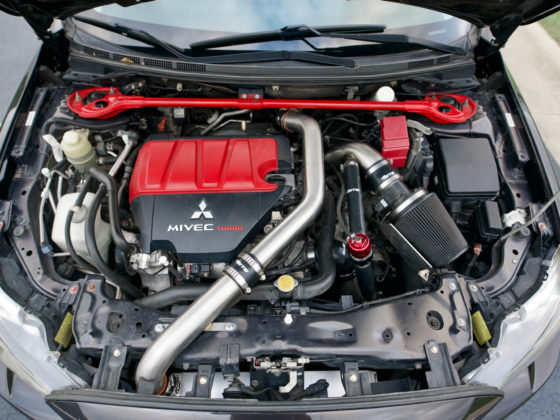
The Peitz Performance harness bar is made out of 0.120 wall 1.25″ diameter DOM tubing. These bars pass SCCA and NASA tech and keep the harness angle between zero and twenty degrees below your shoulder plane. The harness bar works with the stock seats or race seats and also gives free access to the fuse box.

We used a 5-point 3″ cam lock harness from Simpson Race Products. Note that we did not use the anti-sub belt as the stock seat does not have provisions for it. The OEM seat will not allow the anti-sub belt to be at the proper angle. We do realize this is not optimal but it’s better than the stock 3-point system.

The shoulder harnesses are 3″ but are 2″ near the shoulders for head and neck restraint compatibility.

The main buckle is a quick release dial although a lever release is optional if that is your preference. The harnesses have clip-in ends.

To begin our installation we first remove the seats by unbolting the 4 bolts holding down the seat rails.




9 comments
NASA
The driver and any passenger must utilize modern style stock seatbelts in very good condition, or a DOT
approved restraint system, while operating a vehicle on the track. Lap belts used without any shoulder
restraints are not permitted. Restraint system requirements are listed in Section #11.4.8. The only fourpoint belt systems that are allowed for use in HPDE / TT are 1) those that carry an “FIA B-xxx.T/98 (or
newer) certification, or 2) those that carry a label from the belt manufacturer stating that the belts meet
Federal Motor Vehicle Safety Standard (FMVSS) 209 and that the belts were designated for the specific
vehicle (e.g. “For use only in BMW E36 models”). Such label must be easily visible to the NASA inspector.
Note- four-point belt sets that have a DOT-only certification are prohibited.
This is what the manufacture claims.
Mark, we have put the bar and harnesses through multiple tech inspections over the last year and a half. The biggest thing NASA tech inspectors focused on was the harness angle being correct and the harnesses fitting on the driver in accordance with the manufacturer of the belts. I appreciate your input though.
Thank you
The belts required are concrete when going with the compromised 4 point setup. Make sure to read the rule books. Many instructors will not ride in 4 point cars and prefer the OEM belt, so make sure to have the option available.
“People on the internet” are always saying it’s unsafe to run harnesses without a cage. The reasoning offered is since you are in a harness, you won’t be able to duck if the roof caves in. Different factors that come to mind are roof strength, whether ducking is physically possible in a rolling car, etc. but I don’t know if there is a definitive answer. Iirc NHTSA says in most rollover crashes impacting the inside of the car with your head is a bigger concern than the roof crushing. What are your thoughts?
The main reason why this was done is that the car pulls so much G’s that it was hard to stay in the seat and that was hampering the ability to drive the car.
Oh man, as a NASA instructor I would not be okay riding in a car with 4 point harnesses that didn’t have some sort of anti-submarine technology and certification for that specific vehicle, as Mark was citing. I don’t know how that would make it through tech. It wouldn’t/shouldn’t at a NASA North East event. I had Schroth 4 points in my E36, which had the specific label showing they were tested and certified for E36 chassis ONLY and that would still hang up the tech inspection.
What does Simpson think about you using only part of their belt kit?
A 3 point set up is safer than the 4 point, because the 3 point allows rotation of the upper body to prevent submarining. In my corvette I can cinch the 3 point which holds me in quite securely without movement.
Do you have a link to data that proves that? I would like to research this myself.